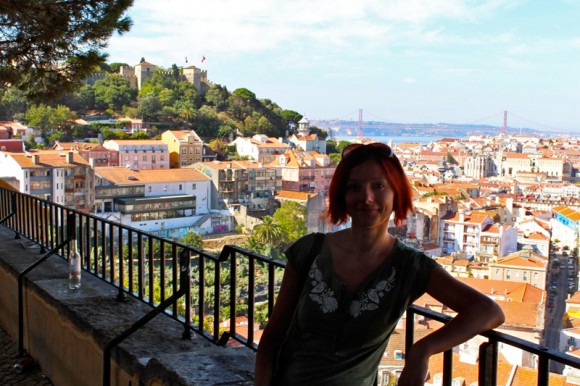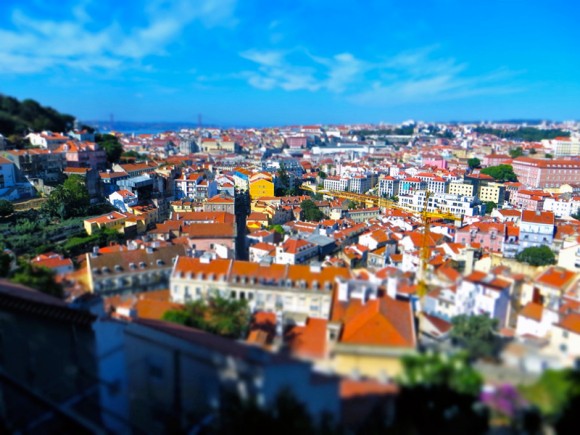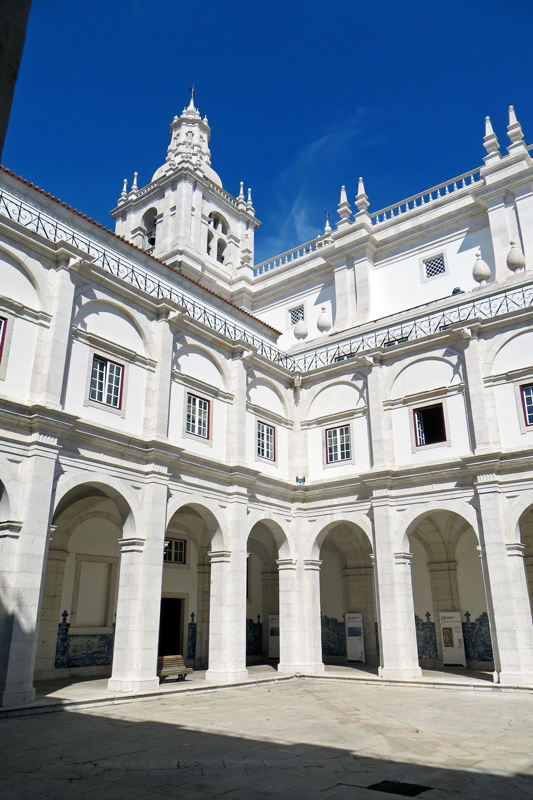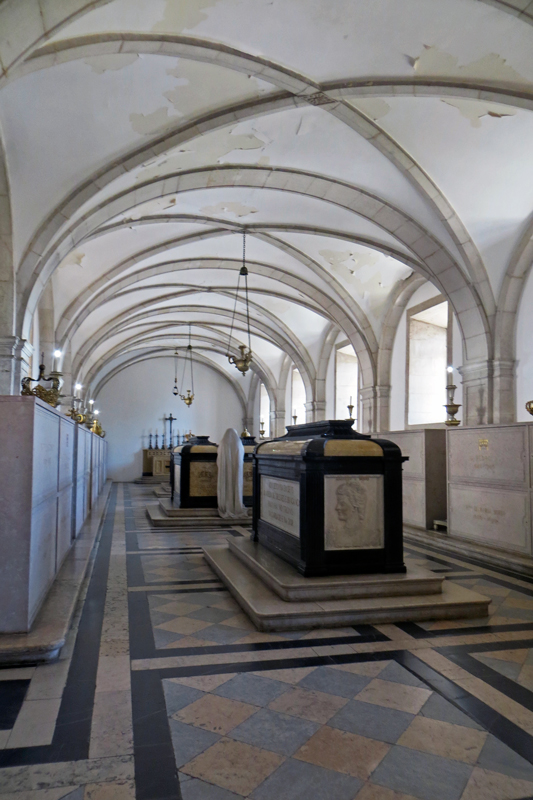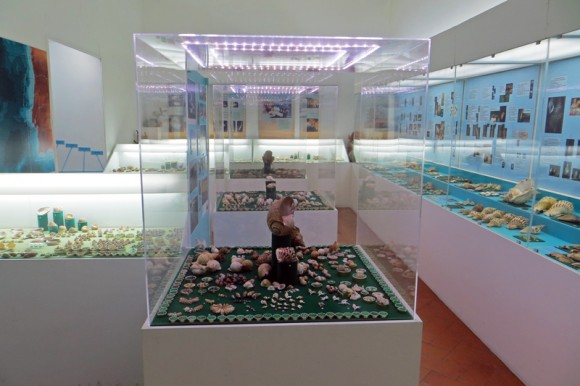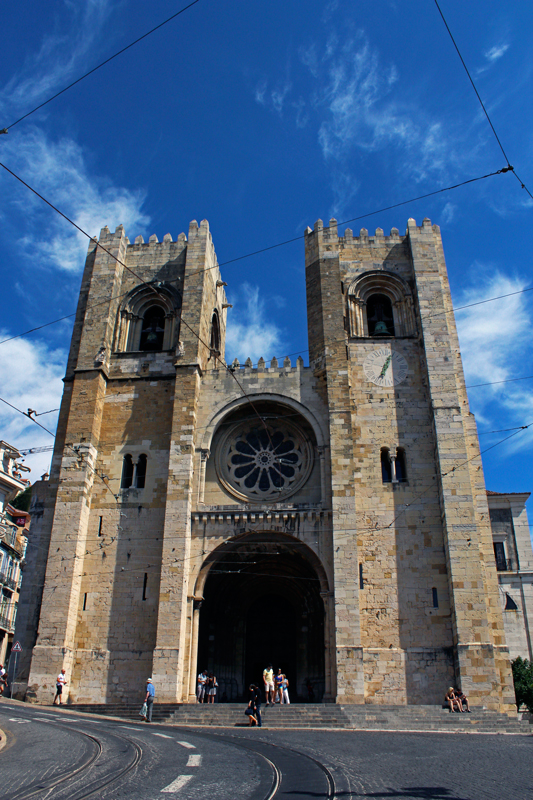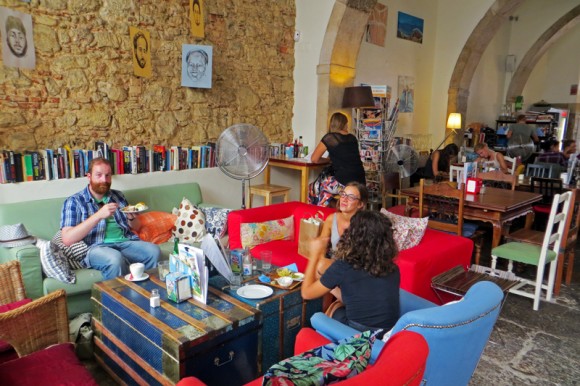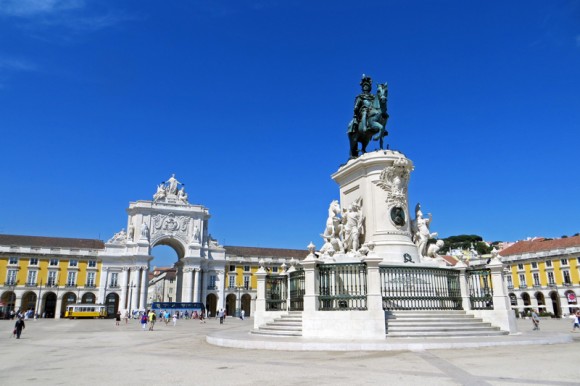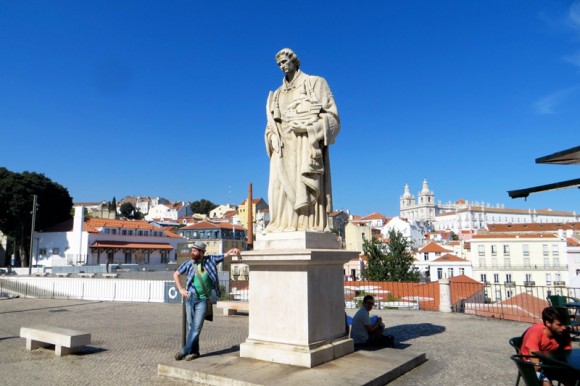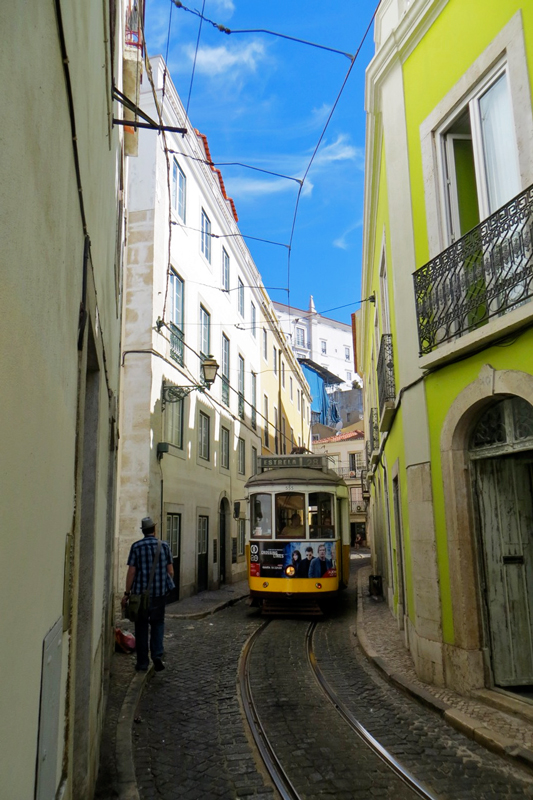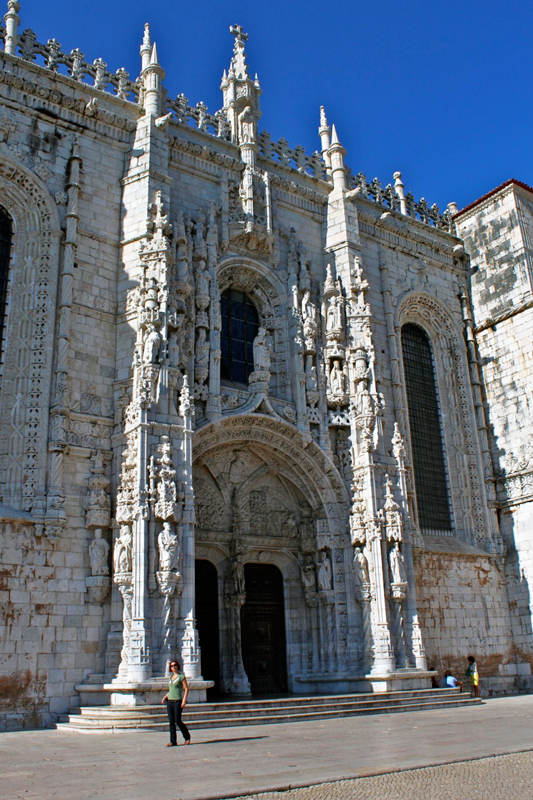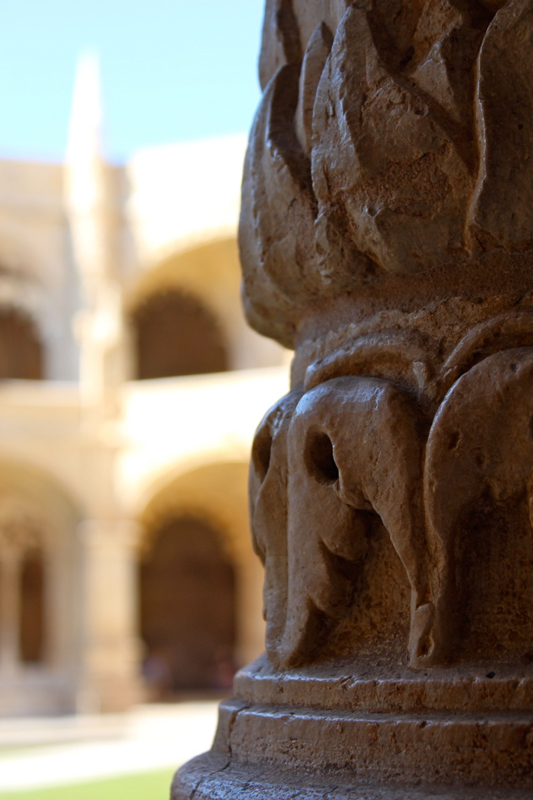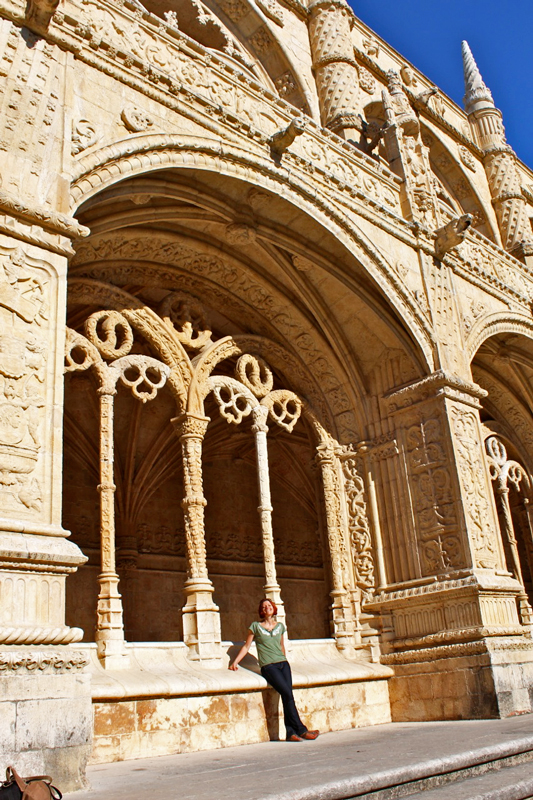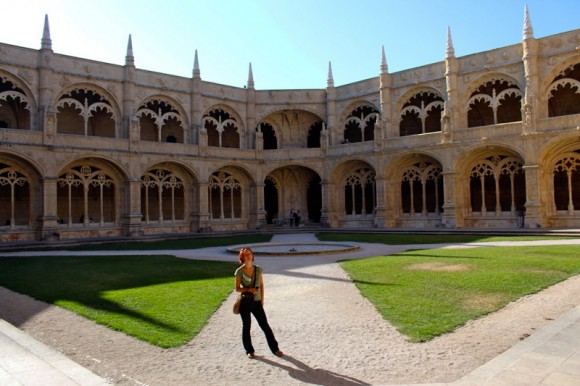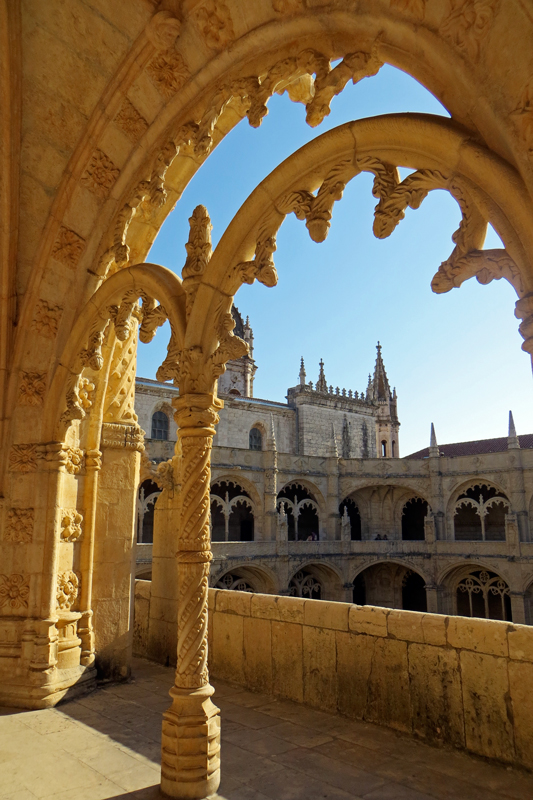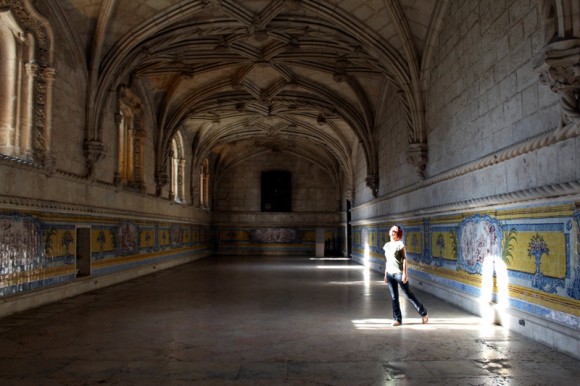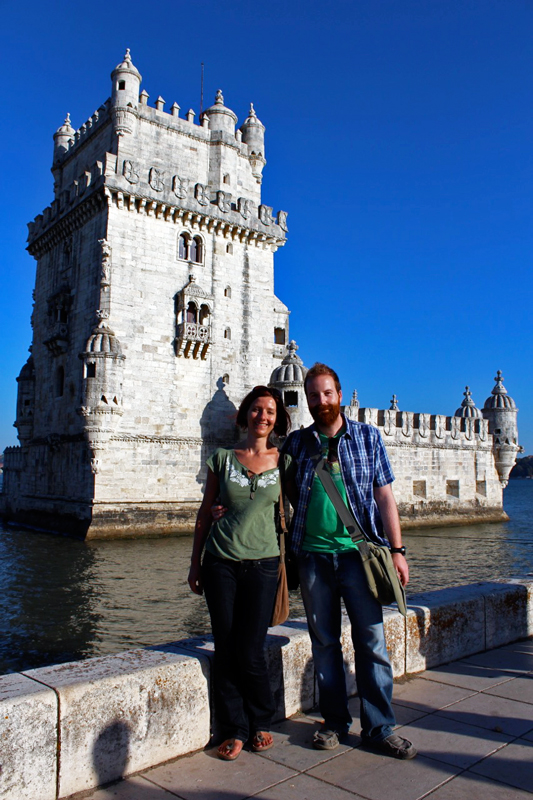Tuesday
Lisbon time! A bit scared of the driving and parking in Lisbon’s tiny, narrow, one-way, crowded streets, we did not let the fear get the best of us and bravely headed in for the morning. Iestyn and Nexy did super well and we arrived at our chosen hyper-modern underground parking lot in the middle of all that mattered in Lisbon.
We started off at the Miraduro da Graça, a nice viewpoint over the town with a cherry of a church on top. From there we walked over to the gorgeous Igreja São Vincente de Fora, with beautiful azulejo-filled cloister and epic exhibition of 18th-century azulejo illustration of La Fontaine’s Fables. Also, the biggest collection of seashells.
Quick trip to the flea market behind the church, and outside view of the national pantheon. We were not too keen on the insides of the castle, which was also insanely touristy, so we just made a nice walk around on the top of the hill for views.
A visit to the cathedral and a couple more churches, and we were ready for a rest in a nice Austrian café with toasted sandwiches, strudel and beer/coffee. This gave us energy for more sightseeing, and we headed to the spectacular Praça do Commercio, where we were approached by drug dealers every time we passed by the central statue of Dom Jose I (no less than five times).
We then tried to figure out how to get to Belem by public transport when Iestyn had a genius idea of just driving there, which proved super useful not only because it was only some 7 km from where we were, but also because we later found out that our campsite was very close to Belem as well.
In Belem, we visited the most beautiful place of them all, the ultimate Manueline beauty to rule them, the Mosteiro dos Jeronimos. Do I even need to mention it’s on the list?
Standing at the entrance to Lisbon harbour, the Monastery of the Hieronymites – construction of which began in 1502 – exemplifies Portuguese art at its best. The nearby Tower of Belém, built to commemorate Vasco da Gama’s expedition, is a reminder of the great maritime discoveries that laid the foundations of the modern world.
As our book says:
The mosteiro is the stuff of pure fantasy – a fusion of Diogo de Boitaca’s creative vision and the spice and pepper dosh of Manuel I, who commissioned it to trumpet Vasco da Gama’s discovery of a sea route to India in 1498. There is nothing like the moment you walk into the honey-stoned Manueline cloisters, dripping with organic detail in their delicately scalloped arches, twisting auger-shell turrets and columns intertwined with leaves, vines and knots.
Indeed, nothing like it. Vasco da Gama’s tomb is in the church as well.
From the monastery we walked over to the Tower of Belem, already mighty tired for the day.
